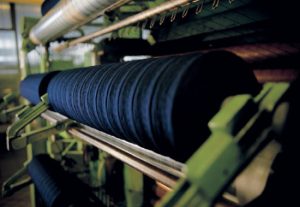Published: 6th February 2017Download issue:Donald Trump’s presidential win has unleashed animal spirits in the US that are likely to continue to drive equities forward in 2017. So argues Frank Bigler, head of equity investment research at Pictet Wealth Management, in the latest special edition of Perspectives. There are undoubtedly risks, but for the moment, “the overall direction of the market is still up,” according to Bigler “and any pull-back would be taken as an opportunity to exploit.”Sector wise, US banks stand to benefit from the Trump administration’s commitment to boosting growth and lightening regulations. But banks, both in the US and Europe were already recovering before the presidential elections. From being the worst-performing sector in the first half of 2016, banks became the best performing in the second half as bond yields and inflation expectations rose from their July low points. As for the way forward, Yann Goffinet, senior financial analyst with Pictet Wealth Management, argues that in spite of low returns on equity, the environment for banks “may steadily become less challenging and normalise” as long as 2016 marked the low point for global interest rates.
Read More »Articles by Isidore Ryan
From deflation to reflation, from bonds to equities
December 8, 2016Published: 8th December 2016Download issue:Although Pictet Wealth Management does not expect a significant acceleration in real global economic growth next year, it believes 2017 will see an upturn in price pressures that spark a rise in nominal GDP growth and provides momentum for global reflation.In December’s Perspectives, Pictet Wealth Management’s head asset of asset allocation and macro research, Christophe Donay, discusses the implications of this, his central scenario, for the global economy and financial markets. While Donay expects price pressures to pick up and generate global reflation, he believes that “the pace of change will not be uniform” and that major economies will remain “desynchronized, with fiscal and budget policies that remain non-cooperative”. Nonetheless, after years of disinflation, and even deflation in countries like Japan, “the global economy seems on the verge of a cyclical regime shift”, Donay writes. This shift could impact major asset classes, “favouring equities at the expense of bonds”, while the trend towards US dollar appreciation that started four years ago should continue.Although equities are expensive, writes Donay, Pictet’s central scenario is that “the rise in long- term interest rates will not be enough to impair prospects for equities” as long as the rate rises prove orderly.
Read More »Anna Zegna
August 30, 2016Published: Tuesday August 30 2016When Ermenegildo Zegna founded a wool mill in 1910, he had just four looms which he had bought from his father. He located his business in Trivero in the Alpine foothills of Piedmont where the mountain water has only faint mineral traces and makes cloth that is soft and easy to work. Aged just 18, his aim was to make the most beautiful fabrics in the world – and local people saw him as either a dreamer or a madman. But Zegna fabrics quickly became one of Italy’s most acclaimed exports, and the company is now the world’s largest luxury menswear brand.Today, the Ermenegildo Zegna Group has over 7,000 employees worldwide, with 523 stores in more than 100 countries and revenues of EUR1.261 billion in 2015. From producing fine fabrics, it diversified into menswear in the 1960s, later adding accessories, the luxury women’s fashion brand Agnona, fragrances, men’s under-wear, sunglasses and eyeglasses. Over 90 per cent of its sales are exports to the rest of Europe, the Americas and Asia.The very best materialsThe fabrics that have made Zegna famous are made of the very best materials, such as Merino sheep wool from Australia, cashmere from Mongolia and vicuna from Peru. The latter is incredibly soft and fine: vicuna are sheared every other year and typically produce 150 grams of wool, which makes 180 kilometres of thread.
Read More »
